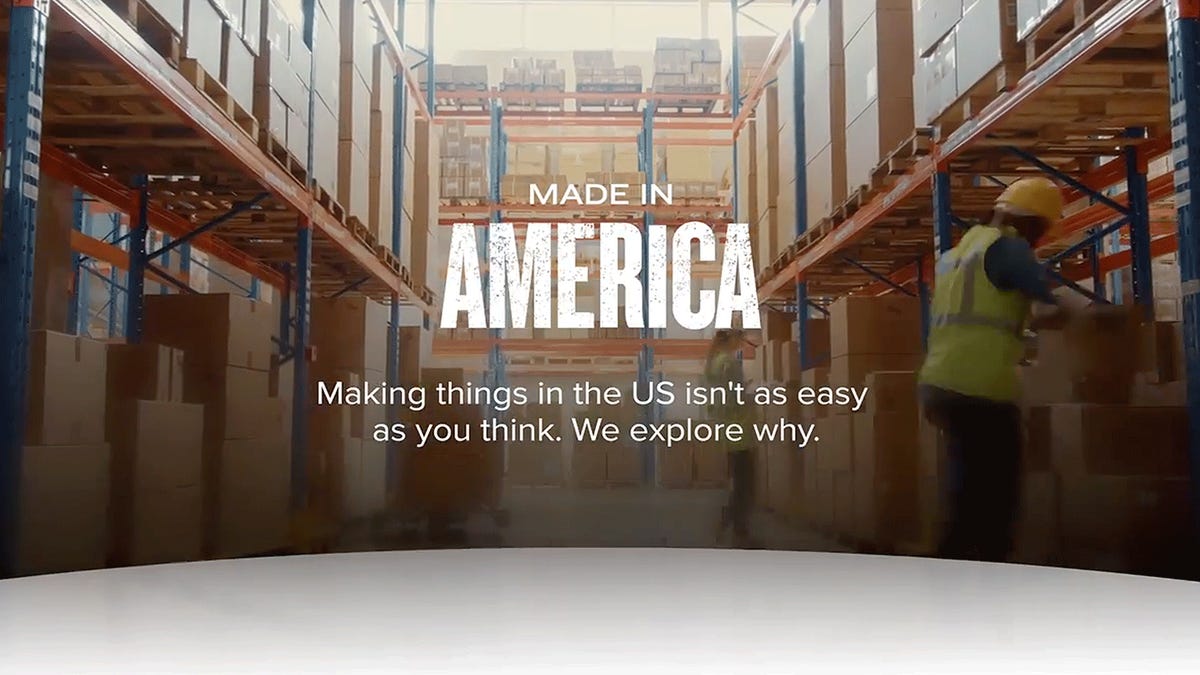Supply chains, labor costs, consumer apathy: Why 'Made in America' is a tricky idea to sell
For Road Trip 2021, the CNET team looked at the challenges in convincing companies to manufacture in the US.

In 1933, President Herbert Hoover signed the Buy American Act into law on his last day in office. The aim was simple: to ensure that a large portion of government spending went to goods made in the US. It was seen as a way to promote American innovation, American companies and American workers.
But nothing's really simple, is it? That's why presidents since Hoover -- including Ronald Reagan, Barack Obama and Donald Trump -- promised to encourage companies to build stuff in the US, to varying degrees of success. In February, President Joe Biden took up the call. He signed an executive order outlining policy ideas on how to incentivize companies to embrace domestic production and also set new guidelines for how much of a product needs to be made in the US to truly count as "Made in America" -- 75% versus 55%. Up for grabs is $600 billion in federal spending.
Biden's moves, part of his administration's Build Back Better agenda, come after decades of offshoring in a quest for cheaper labor and materials led to millions of American jobs being sent overseas. But it also comes after the COVID-19 pandemic closed manufacturing plants around the world, notably in China where a lot of consumer electronics like Apple's iPhone are manufactured. That's highlighted the fragility of the complex international supply chain that's come to dominate industries ranging from smartphones to cars to appliances, as well as ventilators, vaccines and personal protective gear.
For our 2021 Road Trip: Made in America series, CNET set out to understand what Biden -- and America -- is up against when it comes to trying to get companies to make more goods here and hire US workers. We spoke with Celeste Drake, who was appointed by Biden in April as the first-ever director in US history of the country's first-ever Made in America office, to understand why Biden's pitch isn't just political propaganda. We looked at why, despite a pledge by Apple CEO Tim Cook to spend $430 billion in the US over the next five years, the top-selling iPhone will continue to be "Designed by Apple in California. Assembled in China." We examined how small businesses making things in the US use e-commerce to sell their products. We even talked with Hollywood production companies to see what steps they're taking to keep filmmaking in California.
And we visited some companies that do produce goods here. They include Foamation, the Milwaukee-based company that makes the giant cheesehead hats proudly worn by Wisconsinites and Green Bay Packers fans, and Tennessee's first legal moonshine distillery. We also traveled to Intel's new chip production facilities in Arizona to to understand the challenges and opportunities it faces in fixing a global chip shortage that affects everything from phones to refrigerators.
Along the way, we also learned that even though Americans like the idea of buying goods made in the US -- and there are more on the market than you might think -- most of us buy more goods produced overseas because some products just cost less.
Made in America Director Drake told us that the Biden administration recognizes there are challenges to manufacturing in the US, including higher labor costs and environmental compliance rules that make products more expensive. But she also said there are advantages to investing and accelerating the production of US-made goods, even if only to make sure we have a redundant supply of key products like computer chips and medical equipment ahead of the next national or global emergency.
"The idea is not to go back to the 1950s. The idea is to capture the industries of the future," Drake told us in a video interview. "This is not about bringing every far-flung supply chain to the United States. But it really does take a lot of work to identify the critical components and to figure out how we can incentivize making those critical components here."
We'll see if American innovation and American companies are up to the challenge.

